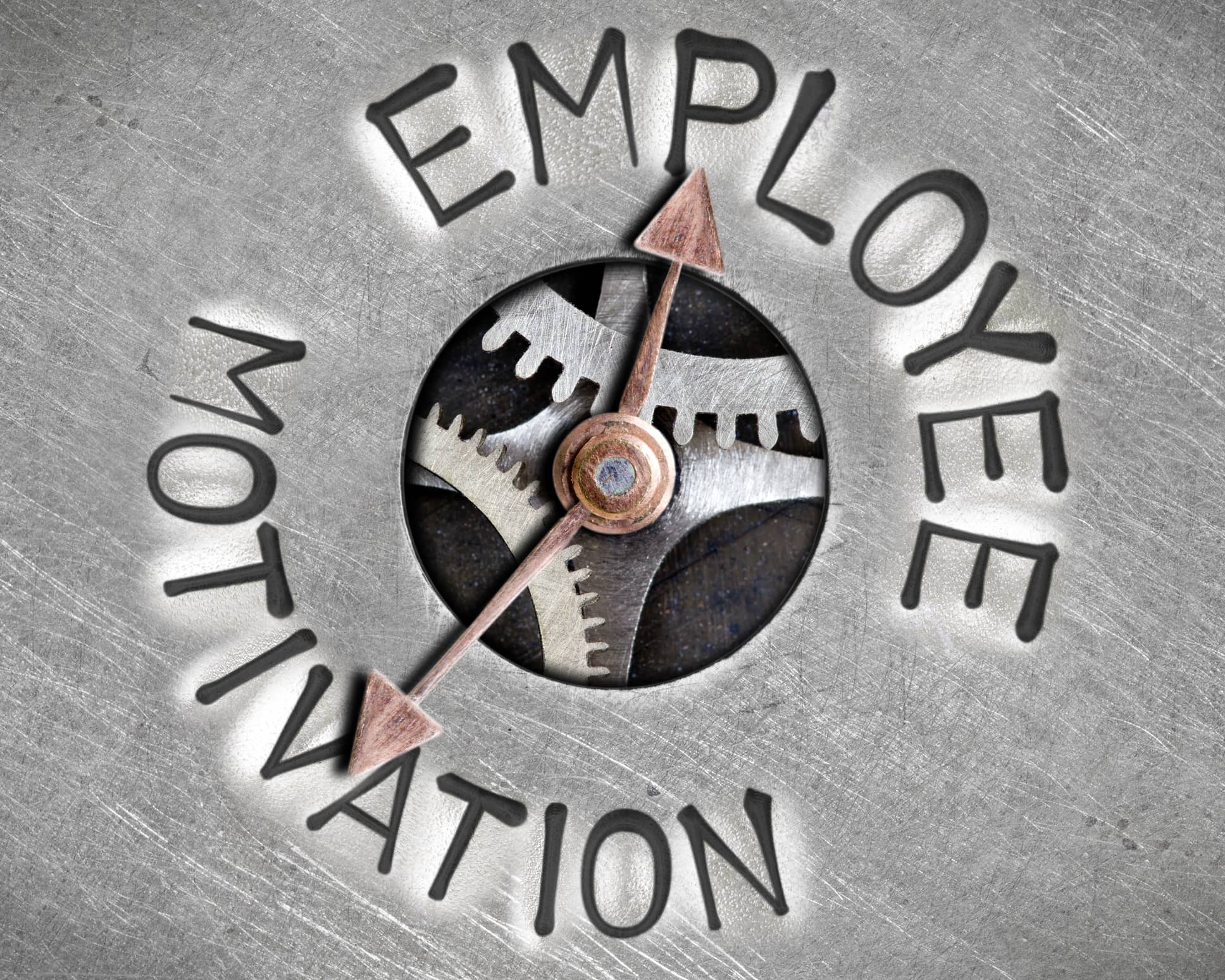Mary Parker Follett, who was once regarded as the Mother of Modern Management, said, “Management is the art of getting things done through people.” Managing people is an intricate dance between art and science. Understanding what motivates employees is key, so they develop professionally, feel fulfilled, meet company goals, and have high performance.
Estimated reading time: 5 minutes
Many companies struggling with employee motivation have a disconnect between how they choose to reward their employees and what motivates them to perform at their best. This disparity is understandable because motivating employees is not cut and dry. The key is understanding the relevant, motivating factors based on the situation, person, and company objectives. And, perhaps more importantly, the type of motivation that fuels your employees.
Extrinsic and Intrinsic Motivation—What's the Difference?
The root of the words extrinsic and intrinsic are external and internal. Simply put, extrinsic comes from outside of one’s self or from external forces; intrinsic motivation comes from inside oneself. Extrinsic motivating factors in the workplace can be monetary bonuses, praise from superiors, or improved workspaces. Internal factors are centered around each employee’s gratification and fulfillment. For instance, intrinsically how they feel about the meaning of their work or their purpose.
In Daniel Pink’s book, “Drive: The Surprising Truth About What Motivates Us,” and in his, Ted talk “The Puzzle of Motivation,” Pink identifies three types of intrinsic motivations.
- Autonomy – the desire to direct our own lives
- Mastery – the desire to continually improve at something that matters
- Purpose – the desire to do things in service of something larger than ourselves
Both extrinsic and intrinsic motivation affect employee performance differently and produce different results. Neither type of motivating factor is appropriate in all situations and with all employees. The release of dopamine by our brains drives our motivation. That's why it's different for each person. What’s rewarding for you may not be rewarding for someone else.
Deep Dive: How to Get Motivated: Intrinsic vs Extrinsic Motivation
Is Extrinsic or Intrinsic Motivation Tied to Better Results?
Teachers have long used extrinsic motivation in schools and coaches in sports programs, such as grades, trophies, and ribbons for performance. Parents also use external motivation to motivate children. A parent might offer a cookie as an incentive to be quiet while they are on the phone or to stay up past bedtime to complete chores. The effect of these external motivators is the same whether we are talking about children in school or adults in the workplace.
Although incentives can create extrinsic motivation in the short term, motivation will likely wane over time or require increased incentives to produce the same performance level. Extrinsic motivators can help when an employee is uninterested in a task or where skills are needed to complete work adequately.
However, the results of extrinsic motivating factors are employees performing well because they receive rewards for their efforts, not because they feel a strong sense of fulfillment from their work or a desire to do their best for the company.
The Benefits of Intrinsic Motivation
The best performance comes from employees who feel fulfilled and intrinsically motivated to perform.
The benefits of intrinsic motivation:
- Promotes employees who are driven and creative
- Encourages self-improvement
- Helps employees to see themselves as a part of something bigger
Intrinsically motivated employees feed a culture of creativity, teamwork, and continual improvement.

Promoting High Performance and Intrinsic Motivation in Employees
For managers and leaders, understanding how to develop strategies to motivate their employees is crucial for developing high-performing teams. Company leaders can improve employee satisfaction and morale by discerning and responding to what makes employees tick. It’s critical to get clear on how your employees work best.
Using their strengths to define and develop roles and task management will aid in this process. When an employee is personally invested in the outcome of a complex project and is armed with original thinking or critical thinking skills, their performance is stronger, and their work more fulfilling. And this outcome is good for companies.
Consequences and Challenges When Employees Lack Internal Motivation
When internal motivation is absent, employees are unable to produce without incentives to take action. They can become passive without incentives. Or they only engage for the carrot rather than caring for the quality of a company’s culture, team members, or saving resources to increase profits. If leaders don't understand their employees' intrinsic motivators, extrinsic motivators may be overused in an attempt to entice employees. When these external factors are misused, employees often begin to expect and require greater incentives to do their job at a mediocre level for the same output and results.
Also, the development of extrinsic incentives for employees requires significant company resources, and the desired results may not justify the expenditure of resources. No one wants to try to motivate others constantly. A growing sense of employee dissatisfaction at work dramatically affects ROI, employee morale, and company culture.
Focusing on the three areas of intrinsic rewards for employees will increase their satisfaction and performance while improving your business culture. When employees have a vested interest and are driven by purposeful work, their initiative and engagement frequently skyrocket. An added perk for the company is high-quality work and results.
Ways Leaders of Companies Can Foster Intrinsic Motivation in Employees
By focusing on promoting intrinsic motivation, managers can simultaneously develop their employees and nurture company culture while achieving desired growth and company goals. Using Pink’s three types of intrinsic motivation of autonomy, mastery, and purpose above, here are some tips that can help you cultivate intrinsic motivation with your employees and teams.
Autonomy – Provide Space with Support and an Open Mind
When employees feel they have power over their time and tasks, they can make decisions to support their work and personal lives simultaneously. Employers that provide autonomy and flexibility, i.e., working remotely, often encourage and create stronger employee engagement. Giving autonomy to employees illustrates your trust in them. However, give autonomy to the degree an employee shows initiative, self-management, and intrinsic motivation; otherwise, the employee can abuse the liberty. Employees who cannot manage themselves have a difficult time with too much flexibility or freedom.
Company leaders need to review their leadership styles and their supervisors’ and managers’ management styles. Take a close look at how they manage employees. Are they micromanagers? Or are they permissive and afraid to hold the employees accountable? Are they absentee managers, giving employees too much power because their direct reports are so competent and dedicated?
Assess how to guide, inspire, and motivate employees more effectively. Capitalize on employees’ strengths by giving them responsibility and authority once they have proven themselves.
Regular communication with employees is also essential. Leaders rarely discover what employees are truly capable of until they have the freedom to work in a way that is best for them. When you have qualified, motivated, and self-reliant employees, cut them loose! Giving appropriate power to employees to do things their own way increases autonomy bringing great dividends. However, letting go and giving increased freedom doesn’t mean a hands-off approach. Let them show you what they are capable of while also being briefed on the progress.

Mastery – Encourage Self-Improvement and Growth
The desire to learn is inherent in people both in their personal and professional lives. By championing employees’ desire for self-improvement, leaders can support and grow their employees’ skills and develop future leaders. Provide and encourage ongoing training and learning resources. Develop career paths with promotions and clear requirements, actionable items, and regular check-ins.
And most of all, whatever training is provided, make sure that your employees are acting on what they learn. Without implementation, what they know will be hollow knowledge that doesn’t advance your company's goals.
Purpose – Create Open Communication with Employees to Show Them Their Efforts Matter
Employees want to feel that their efforts impact their work, team, and company. When employees feel heard and valued, they will have a sense of pride. Employees who are a part of a big vision or something greater than themselves will feel fulfilled and accomplished in their work. Having an open-door policy promotes an environment of communication with transparency.
 Help employees see their impact by giving specific and effective feedback so they understand how vital their work is for the company.
Help employees see their impact by giving specific and effective feedback so they understand how vital their work is for the company.
Understanding how their efforts impact the company’s bottom line and the big picture will promote a sense of belonging. When employees know exactly how they contribute to their company's success, ownership mindset and pride in their work waxes strong. Part of a leader’s job is to act as a bridge and help employees connect the dots of their role and efforts with the company’s mission, vision, and success.
Related Reading: Do You Struggle with a Lack of Employee Engagement?
Building a company with high-performing employees requires understanding the roots of what motivates employees. Learning how to develop intrinsic motivation in employees while simultaneously growing them personally and professionally will produce better results. Both are key to company success as well as creating driven and engaged employees.
Heartmanity supports companies in building strong, thriving relationships and cultures. Our tailored programs and trainings get results. Heartmanity’s executive coaching can help you cultivate a diverse, synergistic culture with cohesive teams—where your employees thrive. To book a training or to hear more about our business programs, email us at support@heartmanity.com.









